Discover the subtle signs of a hummingbird in distress and learn how to act swiftly to save these delicate creatures. This article provides essential insights into recognizing when a hummingbird may be dying, offering practical advice to help you intervene effectively.
From changes in appearance to feeding difficulties, we’ll guide you through the critical indicators of a hummingbird’s health, equipping you with the knowledge to make a difference.
Key Takeaways:
- Ruffled or consistently puffed-up feathers on a hummingbird can indicate illness or stress, as healthy hummingbirds typically have sleek, flat-lying feathers. Observing changes in feather condition can be a sign of poor health.
- A hummingbird with drooping wings and closed or half-open eyes may be experiencing severe illness or injury. Such a bird may exhibit weakness and require immediate attention and a calm environment to recover.
- Changes in grooming behaviour, such as neglecting to preen, can lead to disheveled feathers, affecting a hummingbird’s ability to fly and regulate temperature, which may signal underlying health issues.
- Decreased activity levels, such as prolonged perching or lethargy, and a lack of responsiveness to external stimuli like noise or movement, are concerning signs that a hummingbird may be dying and in need of help.
- Difficulties with feeding, including a reduced appetite, trouble maintaining flight while feeding, or a decrease in feeding frequency, can indicate serious health problems in hummingbirds, necessitating adjustments to feeders or professional care.
How to Tell If a Hummingbird Is Dying?
A dying hummingbird may exhibit puffed-up feathers, drooping wings, closed eyes, altered grooming, lethargy, reduced feeding, labored breathing, and unresponsiveness to stimuli.
| Indicator | Description | Recommended Action |
| Ruffled/Puffed-Up Feathers | Indicates potential illness or stress, deviation from sleek, flat feathers. | Observe from a distance, compare with healthy hummingbirds, provide a calm environment. |
| Drooping Wings/Closed Eyes | Signs of severe illness or injury. | Create a calm environment, minimize noise/movement, seek professional help if necessary. |
| Changes in Grooming Behavior | Decreased preening leading to unkempt feathers, affecting flight and temperature regulation. | Monitor for continued lack of grooming, consider if intervention is necessary. |
| Unusual Perching/Lethargy | Prolonged perching or inactivity indicates distress or illness. | Observe activity levels over time, provide safe space with feeders, seek wildlife expert advice if activity drops significantly. |
| Lack of Responsiveness | Reduced reaction to external stimuli, may signal health problems. | Carefully assess alertness without causing stress, contact wildlife rehabilitator if unresponsive. |
| Difficulty Maintaining Flight | Struggling to fly, essential for feeding and escape, indicates serious issues. | Place in a quiet, sheltered area, minimize handling, contact wildlife rehabilitator for specialized care. |
| Reduction in Appetite | Decrease in feeding enthusiasm, unusual for high-energy hummingbirds. | Log feeding habits, make feeders enticing with fresh nectar, clean feeders, place in sheltered locations. |
| Difficulty in Feeding | Struggle to hover or reach nectar, drastically affects energy levels. | Lower feeders, offer perches, create stationary feeding opportunities, consult wildlife rehabilitator if no improvement. |
| Changes in Feeding Frequency | A decrease in feeder visits can indicate underlying health issues. | Reassess feeder placement/type, switch to easier-to-clean models, offer a variety of food types. |
| Labored Breathing | Open-mouth breathing, wheezing, or heavy chest movements suggest respiratory distress. | Create a calm environment, minimize stress, seek expert care for potential respiratory infections or toxin exposure. |
| Signs of Respiratory Infection | Changes in breathing patterns, lethargy, decreased activity. | Ensure clean feeding stations, remove contaminated feeders, consult bird specialist. |
| Impact of Toxins on Breathing | Disorientation or difficulty flying due to environmental toxins. | Adopt organic gardening practices, provide toxin-free habitat, seek expert care if exposed to toxins. |
| Slow/No Reaction to Movement | Lack of typical alertness or curiosity, not fleeing or tilting head in response. | Observe from a respectful distance, assess responsiveness, consider expert help if no reaction to gentle stimuli. |
| Disorientation and Confusion | Spinning in circles or flying unsteadily, possible neurological issues. | Offer a safe, quiet recovery space, contact a professional for neurological assessment and care. |
| Unusual Friendliness | Approaching humans or not fleeing, usually indicates weakness or illness. | Observe without touching, provide shelter if in immediate danger, contact wildlife rescue for guidance. |
| When to Seek Help | Visible injuries, inability to fly, lying on the ground, heavy breathing, or prolonged lethargy. | Locate local wildlife rehabilitators or avian vets, use directories or hotlines for immediate advice. |
| Preparing for Transport | Create a warm, dark, quiet environment for safe transport to professional care. | Use a small box with soft lining, minimize handling, cover for darkness, transport gently to a rehabilitator. |
| Long-Term Rehabilitation | Specialized care including diets mimicking natural nectar, medical treatment, conditioning for release. | Support rehabilitation centers through donations or volunteering, follow success stories for motivation and learning. |
| Preventative Measures | Ensure a safe feeding environment, mitigate risks from predators/hazards, support broader conservation efforts. | Use safe feeder designs, clean regularly, employ organic gardening, participate in habitat preservation and restoration, engage in citizen science projects. |
Physical Appearance Changes
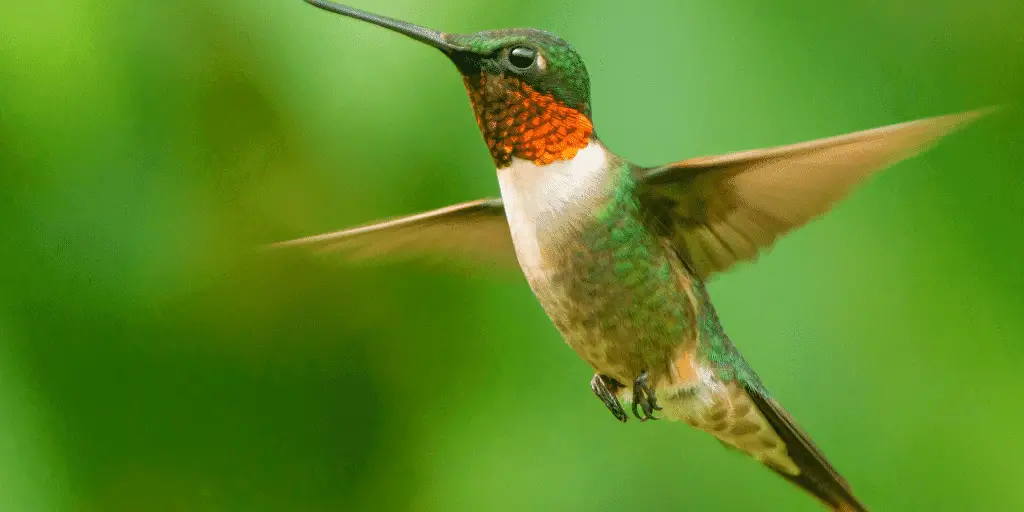
Ruffled or Puffed-Up Feathers
When observing the vibrant world of hummingbirds, their feathers are a tapestry of color and a sign of their well-being. Typically, a hummingbird sports sleek and iridescent feathers that lie flat against the body, a testament to their health and vitality.
However, if you notice a hummingbird with ruffled or puffed-up feathers, it’s time to pay close attention.
This fluffing up can be a hummingbird’s way to regulate body temperature when it’s not feeling well or is under stress. To spot these changes, it’s best to observe from a distance, using binoculars or taking photographs for a closer look without disturbing the bird.
Compare what you see with images of healthy hummingbirds to discern any differences. While preening and grooming are natural behaviors for maintenance of their feathers, deviations from these routines can be telling. If a hummingbird is not preening as it should, or its feathers remain consistently fluffed, this could be a red flag signaling that all is not right.
Drooping Wings and Closed Eyes
Hummingbirds are the epitome of alertness and activity, zipping through the air with wings that beat in a blur. So, when you see one with drooping wings and closed or half-open eyes, it’s a sign that something is amiss.
These symptoms can be indicative of severe illness or injury, and they may require immediate attention. If you find a hummingbird in such a state, it’s important to assess the situation gently.
Create a calm environment by minimizing noise and movement, and if necessary, seek professional help from a wildlife rehabilitator. Watch for signs of weakness, such as an inability to cling to a perch or a lack of response to stimuli, which could indicate that the bird is in a critical state and in need of urgent care.
Changes in Physical Grooming Behavior
Grooming is not just about looking good for hummingbirds; it’s essential for their survival. Through meticulous preening, they maintain their feathers for efficient flight and proper insulation.
When a hummingbird is ill, its grooming behavior often changes. It may neglect to preen, leading to disheveled feathers that can hamper flight and affect the bird’s ability to regulate its body temperature. Observing a hummingbird’s grooming habits can provide a non-intrusive glimpse into its health and stress levels.
If you notice a hummingbird that seems less attentive to grooming or whose feathers appear unkempt, it may be time to consider if the bird is experiencing health issues. Monitoring these behaviors from a respectful distance allows you to gauge the bird’s condition and determine if intervention might be necessary.
Behavioral Changes
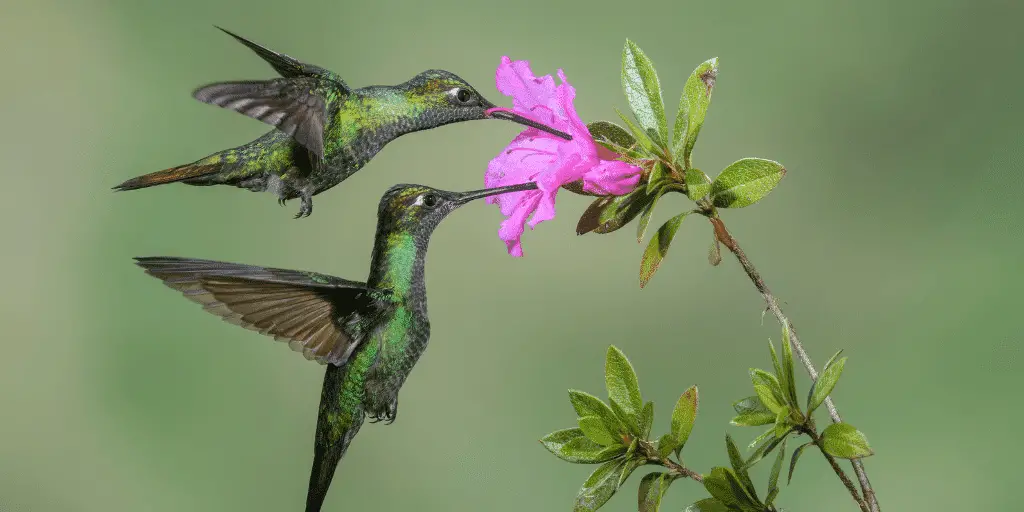
Unusual Perching or Lethargy
Hummingbirds are the dynamos of the bird world, zipping around with seemingly endless energy. It’s rare to see them still during daylight hours, as they’re usually flitting from flower to flower or engaging in aerial acrobatics.
So, when you notice a hummingbird perching for long stretches or appearing unusually lethargic, it’s time to pay attention. This could be a sign that the little bird is not feeling well or is in distress.
To get a sense of what’s normal, observe the hummingbird’s activity over a period of time. Hummingbirds do take short breaks, but if you notice that the periods of inactivity are prolonged and out of character, this could be cause for concern. If a hummingbird’s activity level drops significantly, it’s advisable to provide a safe space with nearby feeders and to consider seeking advice from a wildlife expert.
Lack of Responsiveness to External Stimuli
Alert and curious, hummingbirds are usually highly responsive to their environment. A healthy hummingbird will likely zip away at the slightest movement or noise. If you encounter a hummingbird that doesn’t react to changes around it, such as people approaching or loud sounds, this could indicate a health problem.
To test a hummingbird’s alertness, you can carefully approach or make a gentle noise to see if there’s any reaction, but it’s crucial to do this in a way that doesn’t stress or scare the bird.
If the hummingbird remains unresponsive, it may be suffering from an illness or injury. In such cases, it’s best to contact a wildlife rehabilitator for guidance on how to proceed without causing further harm to the bird.
Difficulty in Maintaining Flight
Flight is not just a mode of transportation for hummingbirds; it’s essential for their survival. They rely on their incredible flying abilities to feed, escape predators, and regulate their body temperature. When a hummingbird has trouble staying airborne, it’s a serious matter that requires immediate attention.
If you see a hummingbird struggling to fly, you can help by creating a calm environment. Place the bird in a quiet, sheltered area away from predators and harsh weather. A shallow container lined with a soft cloth can serve as a temporary refuge.
Refrain from handling the bird too much, as this can cause stress. If the hummingbird doesn’t recover quickly, it’s time to reach out to a wildlife rehabilitator who can provide the specialized care needed to nurse the bird back to health.
Feeding Patterns
Reduction in Appetite
When a hummingbird’s appetite wanes, it’s like a red flag waving, signaling that something might be amiss. These tiny dynamos usually have a voracious appetite to support their high-energy lifestyle, so any noticeable dip in their eagerness to feed is cause for attention.
If you observe a hummingbird that seems hesitant to approach your feeders or the blooms they usually frequent, it’s time to take a closer look. Keeping a detailed log of when and how much they feed can help you spot significant deviations from their normal behavior.
If you notice such changes, consider making the feeders more enticing. This could involve ensuring the nectar is fresh and the feeders are clean. Sometimes, a sick or stressed hummingbird might benefit from feeders placed in a more sheltered location, away from predators and harsh weather conditions.
Difficulty in Feeding
A hummingbird that struggles to maintain its graceful hover or seems to have trouble reaching the nectar is likely facing a serious challenge. These difficulties can stem from illness or injury, and they can drastically affect the bird’s ability to sustain its energy levels. To assist these delicate creatures, you might need to lower the feeders to reduce the energy they expend while feeding.
Additionally, offering feeders with perches can provide a much-needed rest for a bird that’s struggling to stay aloft. In some cases, creating a more stationary feeding opportunity, like a dish of nectar, can make all the difference for a hummingbird that’s not at its peak. If these adjustments don’t seem to help, it may be time to seek advice from a wildlife rehabilitator who can provide specialized care.
Changes in Feeding Frequency
Hummingbirds are creatures of habit, especially when it comes to their feeding schedule. A decrease in the number of visits to a feeder can be an early indicator of health issues.
Monitoring the frequency of their visits can give you insights into their well-being. If you notice that a hummingbird is coming around less often, it might be struggling with an unseen problem. To support these birds, reassess the placement and type of feeders you’re offering.
Sometimes, switching to a feeder with multiple ports or one that’s easier to clean can prevent the spread of disease and provide a safer feeding environment. Additionally, offering a variety of feeders and food types, including different nectar concentrations and insect-rich areas, can help a recovering hummingbird regain its strength and vitality.
Breathing Difficulties
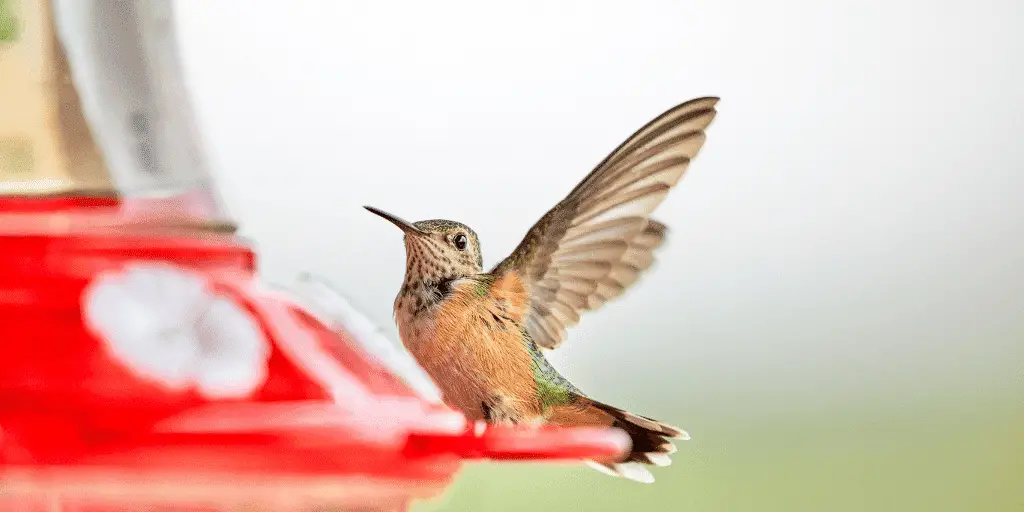
Labored Breathing
When a hummingbird is struggling to breathe, it’s like watching a tiny engine sputter; it’s not only heartbreaking but a clear sign that something is seriously wrong. Labored breathing in these delicate creatures can manifest as open-mouth breathing, a sight not common in healthy hummingbirds, which typically breathe through their nostrils.
If you hear unusual wheezing sounds or see their tiny chests heaving more than usual, it’s time to pay close attention. These symptoms could be the result of respiratory infections, environmental toxins, or even physical injuries.
The stakes are high for these little birds, and they need help quickly. If you notice these signs, it’s crucial to minimize stress for the hummingbird. Create a calm environment by keeping it away from loud noises and disturbances. Meanwhile, reach out to a wildlife rehabilitator or a vet experienced with birds.
They can provide the specialized care needed to address the root cause of the distress, whether it’s an infection needing medication or an environmental factor that must be eliminated.
Signs of Respiratory Infection
Hummingbirds are like feathered athletes; every breath fuels their high-speed lifestyle. So, when a respiratory infection hits, it can take a toll on their tiny bodies rapidly.
Symptoms to watch for include a change in their breathing pattern, lethargy, and a decrease in their usual activity levels, such as less flying or feeding. These infections can stem from bacteria or fungi, often proliferating in unclean feeding stations.
To protect these vibrant visitors, ensure that their feeding stations are immaculate, cleaning them regularly to prevent the growth of harmful pathogens. If you suspect a hummingbird is suffering from a respiratory infection, it’s essential to act swiftly.
Remove any potentially contaminated feeders immediately to prevent the spread of disease and consult with a bird specialist for the best course of action.
Impact of Toxins on Breathing
The air that fuels the rapid wingbeats of a hummingbird should be pure and clean. However, environmental toxins, such as pesticides or fumes from vehicles, can contaminate their habitat and lead to serious breathing difficulties.
If a hummingbird has been exposed to toxins, you might notice that it seems disoriented or has trouble flying, as its respiratory system struggles to cope with the harmful substances.
Creating a safe haven for these birds means embracing organic gardening practices, avoiding the use of pesticides, and planting native flowers that provide natural nectar without the risk of chemical exposure.
If you suspect toxin exposure, remove the hummingbird from the area and seek expert care to give it the best chance of recovery. Remember, the health of our feathered friends is a reflection of the health of our environment, so keeping their world toxin-free is a benefit to all.
Response to Stimuli
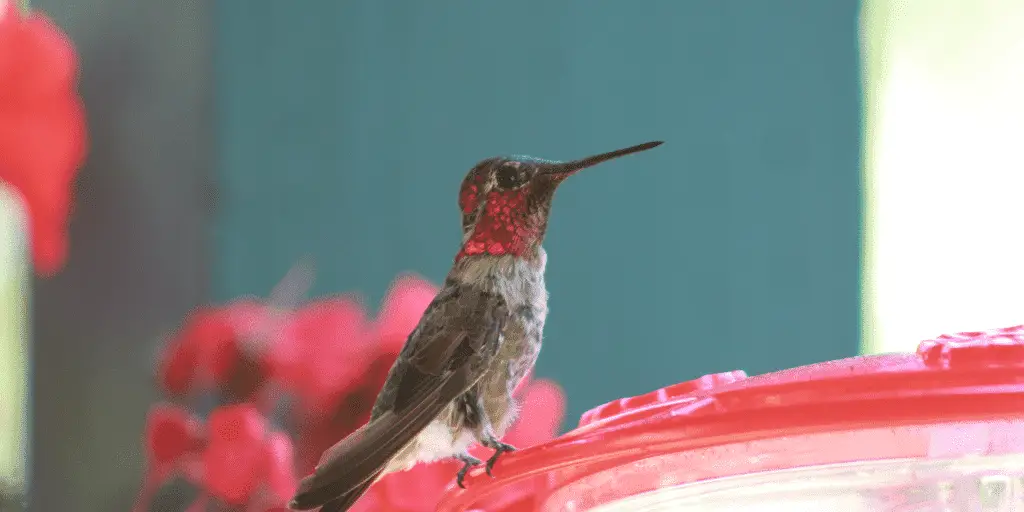
Slow or No Reaction to Movement
Hummingbirds are the acrobats of the avian world, zipping through the air with astonishing agility. Their survival hinges on their ability to react swiftly to movement and noise, whether it’s evading a predator or competing for nectar.
When a hummingbird doesn’t dart away or show curiosity as you approach or if there’s a lack of the typical head tilting and body repositioning, it’s time to pay close attention.
To safely assess a hummingbird’s responsiveness, first ensure you’re not causing undue stress. Approach slowly and observe from a distance that’s close enough to see details but far enough to give the bird space.
If you’re indoors, dim the lights and minimize noise. Outdoors, keep a respectful distance, using binoculars if necessary. Look for signs like the bird not flinching when a branch moves or not reacting to nearby sounds. These could be red flags indicating distress or illness.
Disorientation and Confusion
A hummingbird spinning in circles or struggling to fly straight could be experiencing disorientation, a serious symptom that often points to neurological issues or extreme stress. Causes can range from window collisions to toxins. Recognizing this behavior is crucial, as it can lead to a rapid decline in the bird’s health.
If you notice a hummingbird exhibiting such signs, it’s essential to act quickly but calmly. Create a safe, quiet space for the bird to recover, away from predators and disturbances.
A small box lined with a soft cloth can serve as a temporary haven. However, professional assistance from a wildlife rehabilitator or veterinarian should be sought immediately, as these experts can provide the specialized care needed for recovery.
Unusual Friendliness or Lack of Fear
A hummingbird that doesn’t zoom away or even approaches humans is not showcasing friendliness but likely signaling a problem. These tiny birds are wired to be wary, and a lack of fear often means they’re too weak or ill to flee. It’s a misconception to think of this behavior as a sign of trust or tameness; it’s a cry for help.
In such instances, it’s vital to maintain a gentle demeanor. Avoid the urge to touch or handle the bird, as this can cause additional stress. Instead, observe from a distance and look for other signs of illness or injury.
If the bird is in immediate danger, for example, from cats or extreme temperatures, carefully place it in a sheltered, quiet area and contact a wildlife rescue organization. Remember, these creatures are delicate, and their best chance for survival comes from professional care.
When and How to Seek Help
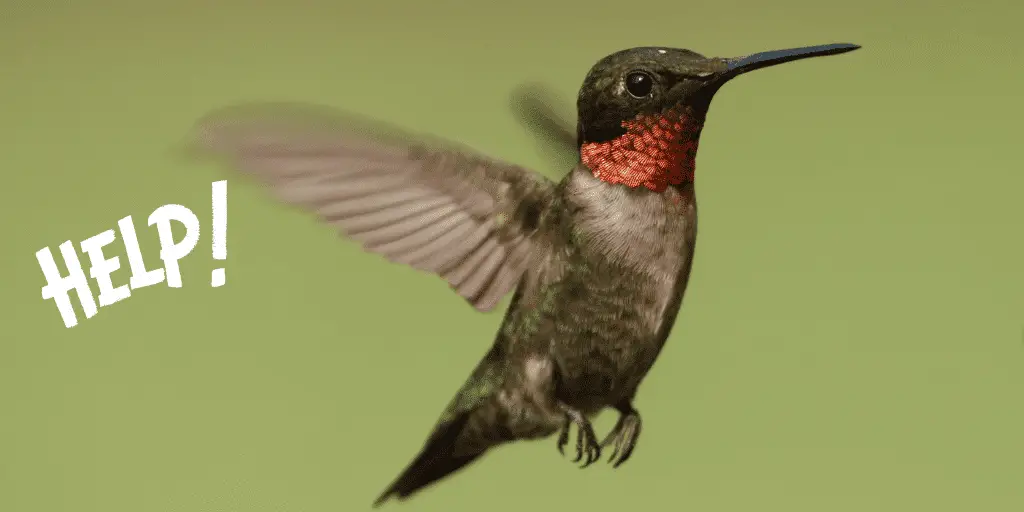
Identifying the Need for Professional Help
When a hummingbird is in distress, time is of the essence. Recognizing the signs that a hummingbird needs professional care is crucial. Severe physical symptoms such as visible injuries, bleeding, or an inability to fly are clear indicators.
Additionally, if you notice a hummingbird lying on the ground for extended periods, breathing heavily, or showing signs of lethargy and disorientation, these are serious red flags.
To find help, start by searching online for local wildlife rehabilitators or avian veterinarians. Websites like the National Wildlife Rehabilitators Association offer directories to locate nearby professionals.
Alternatively, hotlines such as the Hummingbird Hotline provide immediate advice and can direct you to the nearest help. Remember, acting swiftly can significantly increase the chances of recovery for the hummingbird.
Preparing to Transport a Distressed Hummingbird
Once you’ve identified a hummingbird in need, preparing for safe transport is the next step. Create a warm, dark, and quiet environment using a small box lined with soft tissues or a clean cloth. This makeshift nest should be cozy but not overly stuffed, allowing the bird some space without the risk of injury.
Minimize handling to keep the bird’s stress levels low. If you must handle the bird, do so gently and with clean hands. Cover the box with a lid or a light cloth to keep the bird in darkness, which has a calming effect.
During transport, keep the car quiet and avoid any jarring movements. It’s natural to have concerns about transporting a wild bird, but remember that your intervention is vital for its survival.
Long-Term Rehabilitation and Release
At a rehabilitation center, hummingbirds receive meticulous care tailored to their unique needs. This includes specialized diets, often involving a mixture of sugars and proteins to mimic natural nectar, and medical treatment for any injuries or illnesses. Rehabilitators also work on conditioning the birds for release, ensuring they’re ready to thrive once again in the wild.
Success stories abound, showcasing the resilience of these tiny creatures and the dedication of those who care for them. For instance, a hummingbird with a fractured wing can, with proper care, return to the wild in a matter of weeks.
These stories not only warm the heart but also underscore the importance of rehabilitation centers in the conservation of hummingbird populations. By supporting these efforts, everyone can play a part in safeguarding these iridescent jewels of nature.
Preventative Measures to Protect Hummingbirds
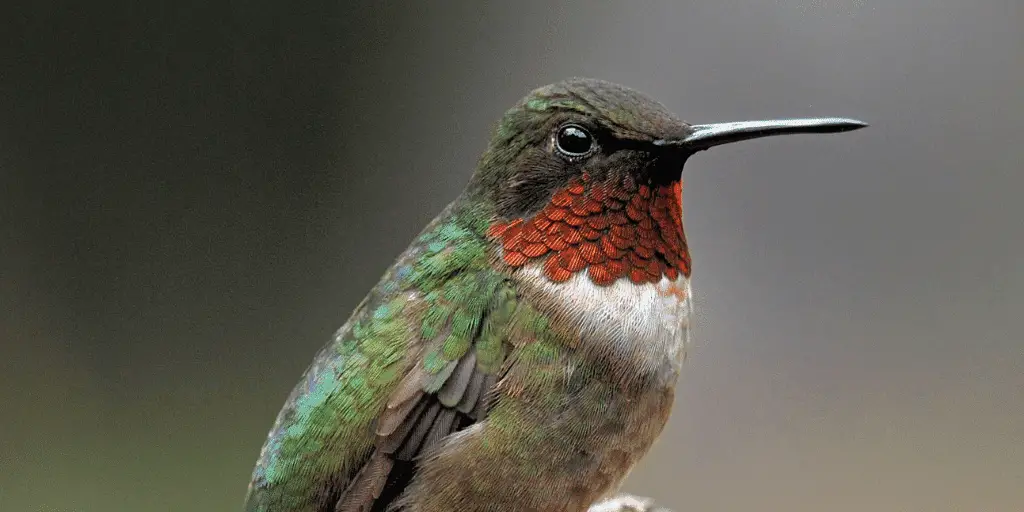
Creating a Safe Feeding Environment
To ensure the well-being of hummingbirds, it’s crucial to provide a safe and healthy feeding environment. Start by selecting a feeder with a design that minimizes the risk of injury, such as those with no sharp edges or points.
The feeder should be easy to disassemble for thorough cleaning, which is essential to prevent the growth of mold and bacteria that can cause disease. Regular cleaning, ideally every two to three days, is a must, and even more frequently in hot weather.
When preparing nectar, opt for a homemade solution of one part white sugar to four parts water, boiled to eliminate any pathogens. Avoid using honey or artificial sweeteners, as these can be harmful to hummingbirds.
In addition to feeders, encourage natural food sources by planting a variety of nectar-rich flowers, which provide essential nutrients and help create a habitat that supports the overall health of hummingbird populations.
Mitigating Risks from Predators and Hazards
Hummingbirds face numerous threats in their environment, from predators like cats to unintentional hazards such as windows. To protect these tiny birds, keep cats indoors or supervise them when outside. You can also place feeders high enough to be out of reach from ground predators and away from places where they can ambush the birds.
Windows pose a significant risk for bird strikes, but this can be mitigated by using bird-safe window treatments or decals that make the glass more visible to flying birds.
Additionally, inspect your garden for potential dangers like sticky plant sap or spider webs that can entrap hummingbirds, and take steps to remove or reduce these risks. By being vigilant and proactive, you can create a safer space for hummingbirds to thrive.
Supporting Hummingbird Health Through Conservation
Beyond individual gardens, the health of hummingbird populations is tied to broader conservation efforts. Habitat loss and climate change are significant threats to these birds. By engaging in habitat preservation and restoration initiatives, you can contribute to the well-being of hummingbirds on a larger scale.
Participate in citizen science projects, such as tracking hummingbird migrations, to aid in research and conservation strategies. Support policies and organizations that focus on protecting natural habitats and addressing climate change.
Every action, no matter how small, can have a positive impact on hummingbird conservation. By fostering an environment that supports their health and safety, you can help ensure that these vibrant birds continue to grace our skies for generations to come.
Conclusion
In conclusion, recognizing the signs of a dying hummingbird involves careful observation of their physical appearance, grooming behaviors, feeding patterns, and responsiveness to stimuli.
Key indicators include ruffled feathers, drooping wings, closed eyes, changes in grooming and feeding habits, labored breathing, and a lack of responsiveness to external stimuli. If you notice any of these signs, it’s crucial to provide a calm environment and seek professional help from a wildlife rehabilitator.
Additionally, preventative measures such as maintaining clean feeders, creating a safe habitat, and supporting conservation efforts are essential for the health and longevity of hummingbird populations. By being informed and proactive, you can contribute to the well-being of these remarkable birds and possibly save a life.








